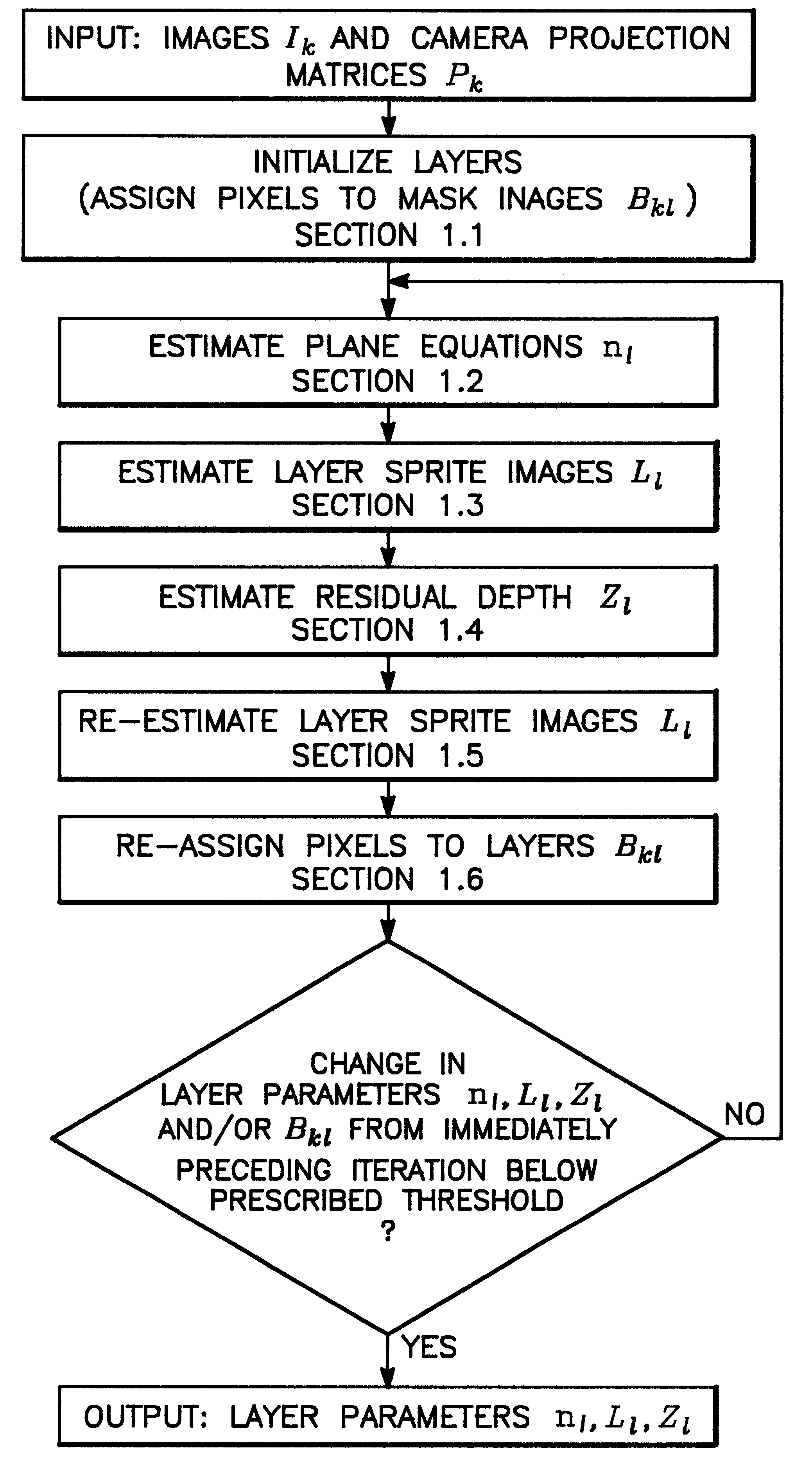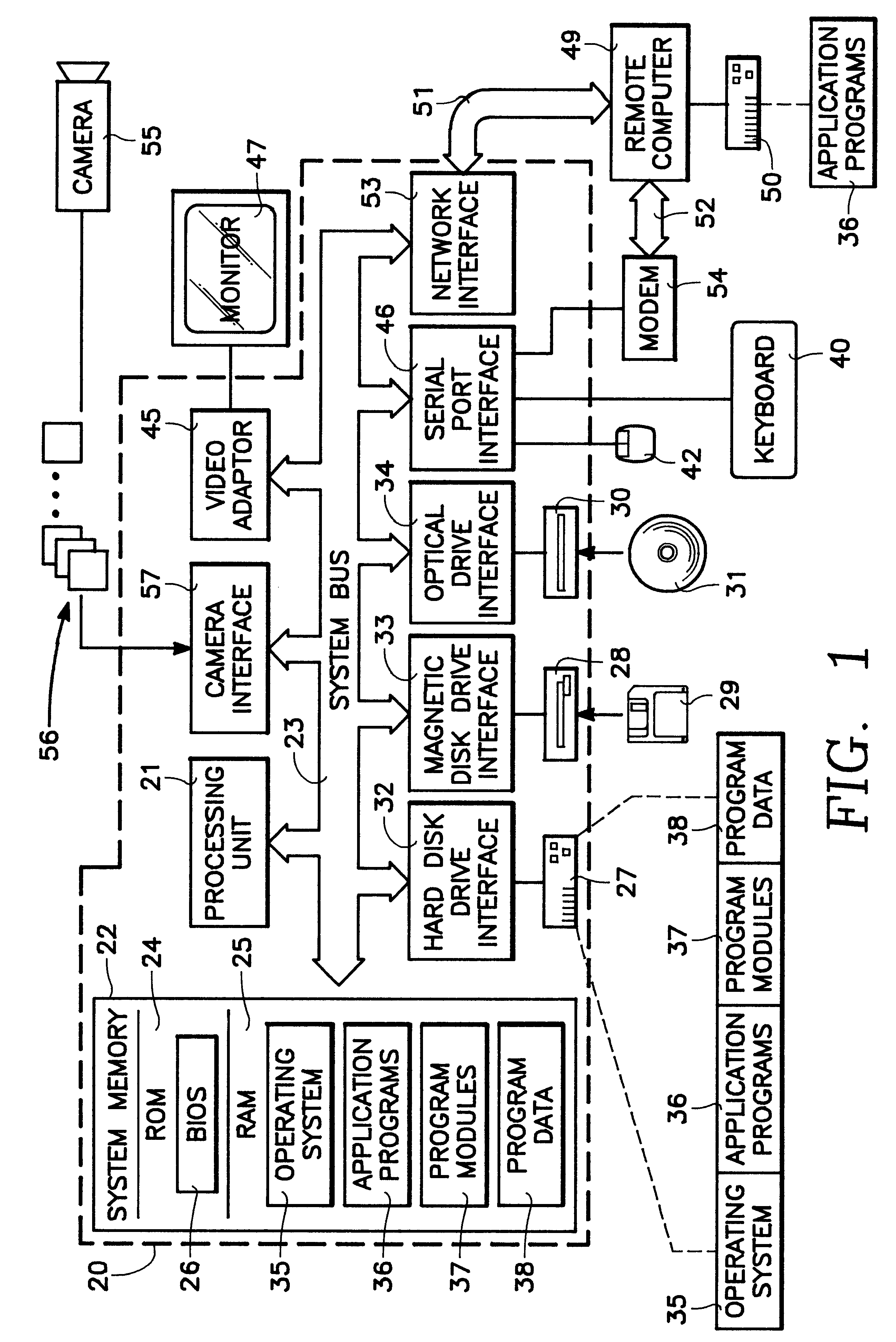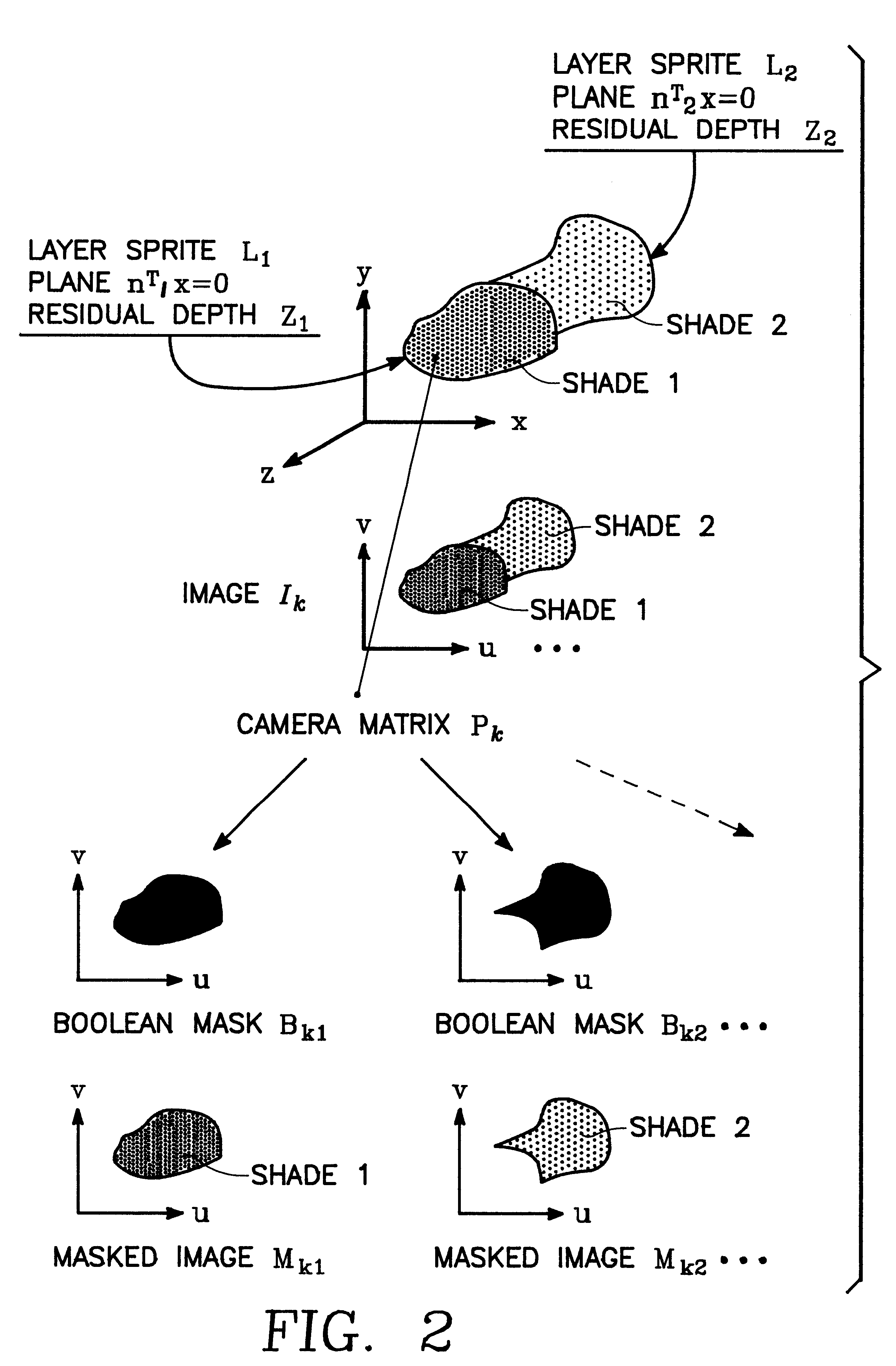Stereo reconstruction employing a layered approach
a layered approach and reconstruction technology, applied in image enhancement, image analysis, instruments, etc., can solve the problems of large volumetric introduction of a huge number of degrees of freedom, insufficient robustness of most techniques, and inability to recover pixel-accurate depth and color information from multiple images
- Summary
- Abstract
- Description
- Claims
- Application Information
AI Technical Summary
Benefits of technology
Problems solved by technology
Method used
Image
Examples
Embodiment Construction
The foregoing estimation process for extracting 3D structure from stereo images was described as including all the program modules depicted in FIG. 3.
Although it is believed the full process will provide the best estimation of the layer parameters L.sub.l, n.sub.l and Z.sub.l ., many applications may not require the high degree of accuracy afforded by the full process. For such applications, some of the modules could be eliminated and still provide the called for resolution. For example, the stereo reconstruction process according to the present invention could be pared down to a five step process involving just the Input, Initializing, Plane Equation Estimation, Layer Sprite Image Estimation and Output modules. In the minimal process, the output would consist of only the plane equation n.sub.l and the layer sprite image L.sub.l . All the other modules depicted in FIG. 3 would be optional. For instance, if a better resolution were required, the Residual Depth Estimation module could...
PUM
 Login to View More
Login to View More Abstract
Description
Claims
Application Information
 Login to View More
Login to View More - R&D
- Intellectual Property
- Life Sciences
- Materials
- Tech Scout
- Unparalleled Data Quality
- Higher Quality Content
- 60% Fewer Hallucinations
Browse by: Latest US Patents, China's latest patents, Technical Efficacy Thesaurus, Application Domain, Technology Topic, Popular Technical Reports.
© 2025 PatSnap. All rights reserved.Legal|Privacy policy|Modern Slavery Act Transparency Statement|Sitemap|About US| Contact US: help@patsnap.com



